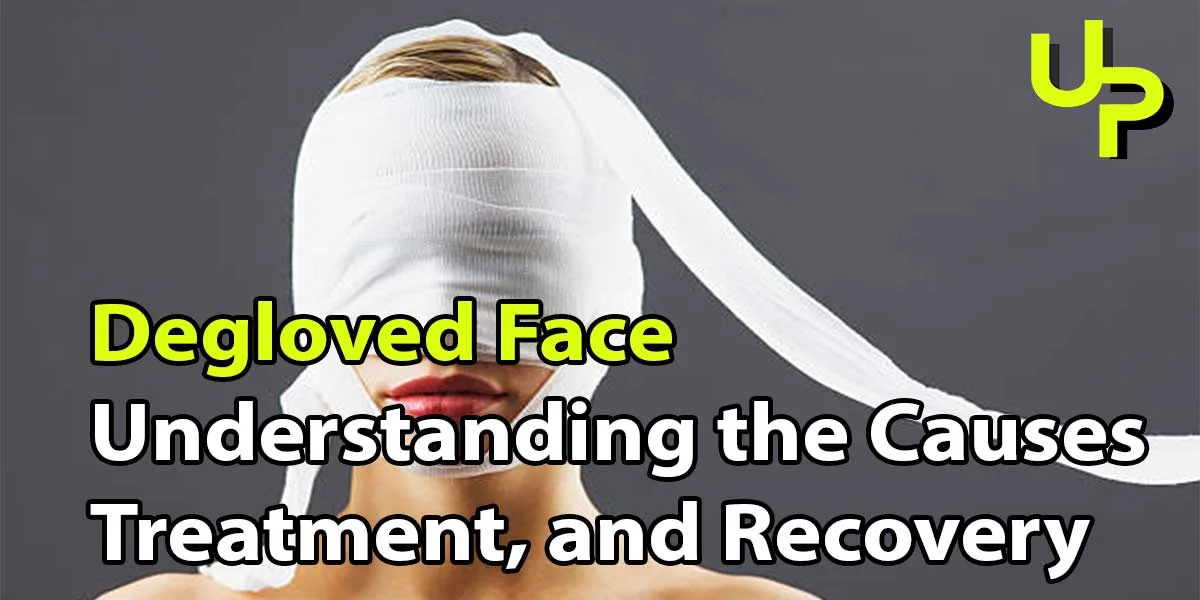introduction
Degloved Face | Face avulsion | Couses, Rreatment, Recovery, A degloved face is a serious injury in which the skin and underlying tissue are torn away from the underlying bone. This can happen as a result of a variety of accidents, including industrial accidents, motor vehicle accidents, and sports mishaps. Degloved faces are often very disfiguring, and can require extensive reconstructive surgery.
Causes of Degloved Faces
The most common cause of degloved faces is accidents involving industrial or farm equipment. This is because these types of accidents can often result in high-speed impact, which can tear the skin and underlying tissue away from the bone. Other common causes of degloved faces include:
- Motorcycle accidents
- Car accidents
- Sports mishaps
- Falls
- Animal attacks
Symptoms of Degloved Faces
The symptoms of a degloved face will vary depending on the severity of the injury. However, some common symptoms include:
- Severe pain
- Bleeding
- Numbness
- Tingling
- Swelling
- Discoloration
- Loss of sensation

Treatment for Degloved Faces
The treatment for a degloved face will depend on the severity of the injury. However, all degloved faces require immediate medical attention. The first step in treatment is to control the bleeding. This may involve applying pressure to the wound or packing it with gauze. Once the bleeding is controlled, the next step is to clean the wound and assess the extent of the injury. If the degloving is superficial, the skin may be able to be reattached. However, if the degloving is more severe, the skin may need to be replaced with a skin graft.
Reconstructive Surgery
Reconstructive surgery is often necessary to repair a degloved face. This type of surgery can be very complex and time-consuming. The goal of reconstructive surgery is to restore the appearance and function of the face. This may involve using a variety of techniques, including skin grafts, tissue flaps, and implants.
Recovery from Degloved Faces
The recovery time from a degloved face will vary depending on the severity of the injury and the type of reconstructive surgery that is performed. However, most people will need to stay in the hospital for several days after surgery. After they are discharged from the hospital, they will need to follow a strict recovery plan. This plan may include physical therapy, occupational therapy, and wound care.

Preventing Degloved Faces
There is no sure way to prevent a degloved face. However, there are some things that you can do to reduce your risk of injury, such as:
- Wearing protective gear when working with machinery or around heavy equipment
- Wearing a helmet when riding a motorcycle or bicycle
- Wearing a seat belt when driving or riding in a car
- Being aware of your surroundings when participating in sports or other activities
Living with a Degloved Face
Living with a degloved face can be a challenge. However, there are many resources available to help people cope with the physical and emotional effects of this injury. These resources may include support groups, counseling, and financial assistance.
If you have been injured in an accident and have sustained a degloved face, it is important to seek medical attention immediately. With proper treatment, you can make a full recovery and live a normal life.

FAQS
What is a degloved face?
A degloved face is a serious injury in which the skin and underlying tissue are torn away from the underlying bone. This can happen as a result of a variety of accidents, including industrial accidents, motor vehicle accidents, and sports mishaps. Degloved faces are often very disfiguring, and can require extensive reconstructive surgery.
What are the causes of degloved faces?
The most common cause of degloved faces is accidents involving industrial or farm equipment. This is because these types of accidents can often result in high-speed impact, which can tear the skin and underlying tissue away from the bone.
What is the treatment for a degloved face?
The treatment for a degloved face will depend on the severity of the injury. However, all degloved faces require immediate medical attention. The first step in treatment is to control the bleeding. This may involve applying pressure to the wound or packing it with gauze. Once the bleeding is controlled, the next step is to clean the wound and assess the extent of the injury. If the degloving is superficial, the skin may be able to be reattached. However, if the degloving is more severe, the skin may need to be replaced with a skin graft.
What is reconstructive surgery?
Reconstructive surgery is often necessary to repair a degloved face. This type of surgery can be very complex and time-consuming. The goal of reconstructive surgery is to restore the appearance and function of the face. This may involve using a variety of techniques, including skin grafts, tissue flaps, and implants.
How long does it take to recover from a degloved face?
The recovery time from a degloved face will vary depending on the severity of the injury and the type of reconstructive surgery that is performed. However, most people will need to stay in the hospital for several days after surgery. After they are discharged from the hospital, they will need to follow a strict recovery plan. This plan may include physical therapy, occupational therapy, and wound care.
Canclusion
Degloved faces are a serious and potentially disfiguring injury. However, with prompt medical attention and proper treatment, most people can make a full recovery and live a normal life. There are many resources available to help people who have sustained a degloved face, including support groups, counseling, and financial assistance. If you have been injured in an accident and have sustained a degloved face, it is important to seek medical attention immediately.

